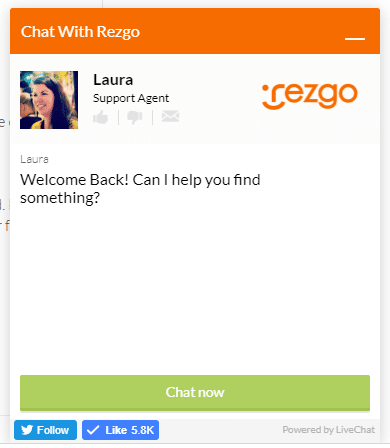What Are Abandonment Rates?
When potential customers visit your website, you hope they’ll make a purchase. Even when they get partway, though, some customers will leave before completing their transaction. The rate at which they do that — abandon a booking at any point — is considered your website’s abandonment rate.
While you can’t expect that rate to ever reach zero, you can take steps to improve it.
Where Do Booking Abandonments Happen?
SaleCycle reveals that shoppers abandon their bookings when:
1. Shown the Price: The price at checkout is more than what the shopper was expecting.
2. Asked for Personal Details: Shoppers are hesitant to give personal information to brands they don’t trust.
3. Asked for Payment Details: Shoppers feel insecure about giving their payment details online.
However, 87% of shoppers consider returning to their bookings.
Why Are Booking Abandonment Rates So High?
SaleCycle asked 1000 people why, when, where, and how they abandon their bookings. Here are the 6 most common reasons they found:
1. Browsing: Browsing is the most common reason shoppers abandon their bookings. Booking a trip requires a lot of planning and thought. Most people like do their research beforehand to check prices, destinations, and other factors before booking the trip at a later time.
2. Price Too High: Have you ever made it to the checkout only to see that there is a 10 percent service charge or $6 in additional fees? This surprise can push users to abandon their bookings.
3. Needs To Check With Other Travelers: Planning a trip for two or more people is complicated. It’s important that shoppers check with their travel buddies before making any purchasing decisions.
4. Booking Process Too Long / Complicated Checkout: According to EduBirdie, abandonment rates increase as page load time increases.
5. Technical Issues/Lost Connection: Technical issues or a lost connection can erase all previous efforts that the customer has made or make the wait time unnecessarily long.
If you use Rezgo as your booking software provider, our services include full customer software support to help solve technical issues experienced on your website. This will help decrease your booking abandonment rates and increase your customer satisfaction!
6. Payment Issues/ Lack of Payment Options: What if most of your customers use Visa but you only offer Mastercard? Providing shoppers with the wrong payment options is a sure way to have them to abandon their bookings.
So we know why and where bookings are being abandoned, but how do you decrease your booking abandonment rates?
Solve Your Booking Abandonment Rate Problem
We can see that booking abandonment rates generally come from user-experience issues. These 13 tips can help you decrease your booking abandonment rates.
1. Thumbnails
Booking an event, flight, car rental, or tour is a difficult decision to make over the Internet. Shoppers don’t have a chance to see or feel what they are purchasing like they do in a physical retail store.
High-definition images provide shoppers with a virtual shopping experience, one where they can see the details of what they are purchasing. For example, tour operators can provide clear, attractive images of the area that will be explored during the tour. Event organizers can show off the performers or the venue.
2. Price Honesty
Be honest with your customers right from the beginning of the shopping experience. Eliminate any surprise charges.
Air BnB handles this by letting shoppers know if there are extra costs to add a third person to a room. You can do the same by explaining the fees in your inventory descriptions or by adding a banner to your site to use as a disclaimer for extra costs like, “5% Booking Fee Applies.”
A clear cancellation policy can also keep guests confident in their purchasing decision.
3. Payment Method Options
Only offering a single payment option gives your shoppers a good reason to abandon their purchase and book elsewhere.
Research the top 3 payment options most used by your target customers so that you minimize your processing fees but maximize your shopper’s satisfaction. PrestaShop’s list of the most popular payment methods by country can help.
4. Multi-Page Checkout
Some studies conclude that single-page checkout processes convert better with their shoppers, but others prefer multi-page checkout processes. A progress bar combines the best of both, letting customers see where they are in the checkout process.
5.Trust Logos
Security logos help customers feel confident with handing over their credit card information. Actual Insights found that 61 percent of consumers had not purchased something online because trust logos were missing.
Of course, you can’t just add logos on a whim — each trust logo has requirements. Fortunately, if you use Rezgo to take bookings, we’ve already handled these security features.
6. Customer Testimonials
Your shoppers will feel safer making a booking with your brand if they see real-life people having real-life experiences using your services.
Testimonials can be in the form of text, photo journals, videos, or even a comment section where past customers can share their experiences — though any user submissions should be carefully and constantly moderated.
One way to harness these customer experiences is to create a contest where past customers post Instagram photos or videos of their time with you. Choose the user who posted the most creative/inspiring and award them with a prize. This way you can collect a handful of visually appealing, creative customer testimonials to put on your site and increase your customer engagement!
7. Navigation
If a shopper becomes frustrated using your website, then they will likely abandon their booking. Use a booking software that is user-friendly and promises a seamless user experience — like Rezgo.
8. Registering
Avoid making your shoppers register a complicated user account before placing a booking. Take only the information you need. Forcing shoppers to go through a long process right at the end of their online-shopping journey is giving them another chance to become frustrated and abandon their booking.
9. Editing The Cart
Mistakes happen! Make it easy for your shoppers to edit their cart selections to avoid having to start the booking process over again.
10. Comparisons
As mentioned above, 37 percent of customers abandon their bookings because they want to make price comparisons.
If your brand uses a low-cost strategy, look into giving shoppers the option to compare prices right on your webpage so that they are less likely to forget about your brand while researching others.
11. Support
If your shoppers need help but can’t find it anywhere on your site, then they are likely to abandon their booking and use a brand that can answer their questions.
Provide your shoppers with support that is easy to access and use. An email address or link to your support site might be enough. You can also look into displaying a “live chat” option at the bottom corner of the screen where shoppers can send messages to your customer support staff. If you have specific hours of operation be sure to make them clear.
12. Discounts
Give your shoppers an excuse to use your booking service by offering promotions and discounts. You can offer a discount for large orders, of example. Be sure to clearly display this promotion on the homepage of your website.
13. Free Cancellation
There are a million factors that can change a shoppers plan to use your service so give them the opportunity to change their mind. If you can, offer shoppers free cancellation if they inform your company 24 hours before the intended use date. Inform shoppers of your free cancellation policy to take some pressure off making a booking decision.
Wrapping Up
Fixing a few elements on your booking site can make the difference between losing or earning extra profit at the end of the year.
Don’t delay… Apply these 13 tips to start decreasing your booking abandonment rates today!
Search The Blog
Categories
Most Popular Articles
- Advantages and Disadvantages of Online Travel Agencies (OTAs)
- Set-jetting, Forest Bathing, and Hush Trips: 20 Innovative Tourism Business Ideas and Trends for 2023
- Your Marketing Mix: the 7 Ps of Travel and Tourism Marketing
- Get More Bookings With These 9 Tourism Website Essentials
- How to Create and Promote Amazing Tour Packages








